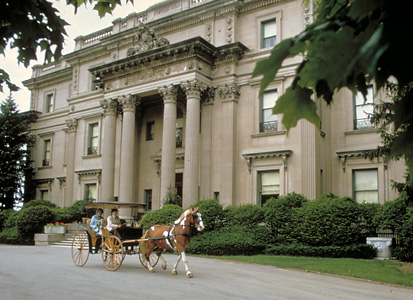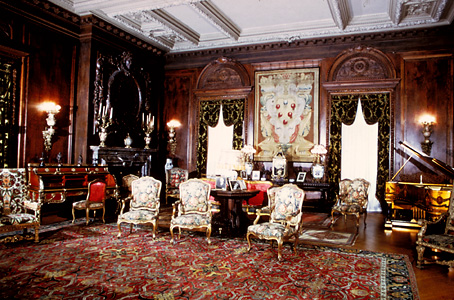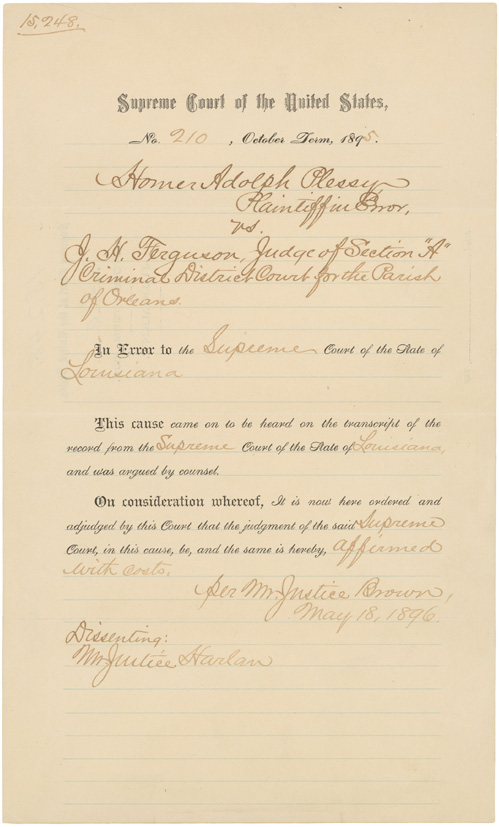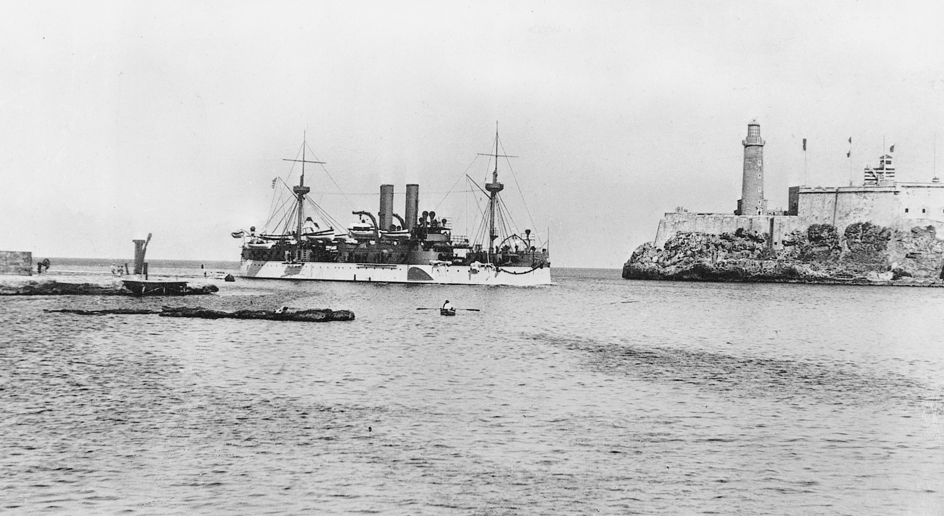Gay Nineties was the period of the 1890’s in United States history. Many Americans prospered during the 1890’s. But the period included a nationwide economic depression, much labor unrest, and the Spanish-American War (1898). Largely as a result of these events, few Americans living in the 1890’s ever regarded the period as happy or lively. The term Gay Nineties became widely used during the Great Depression, the worldwide economic crisis of the 1930’s. During that time of high unemployment, people longed for a comfortable past. They chose to remember only the prosperous years and heroic events of the 1890’s.

Many Americans recalled the gleaming white buildings and the marvelous new Ferris wheel of the World’s Columbian Exposition in Chicago in 1893. Others remembered Lieutenant Colonel Theodore Roosevelt leading his Rough Rider Regiment against the Spaniards in Cuba three years before he became the nation’s 26th president (see Roosevelt, Theodore (The Rough Riders)). Still others thought of the charming gaslights and lively vaudeville shows of the 1890’s.
Life during the Gay Nineties
The privileges of wealth.
In the 1890’s about an eighth of the families in the United States controlled about seven-eighths of the nation’s income. The wealthy included more than 4,000 millionaires, most of whom had gained their fortune in banking, mining, manufacturing, trade, or transportation.
Wealthy Americans lived in elegant mansions or town houses, and many of them spent part of the year in spacious summer homes. They often entertained with lavish dinners and parties. Some collected rare books or valuable art objects. They supported symphony orchestras and opera companies. They sent their children to such exclusive colleges as Harvard and Vassar.

Middle-class prosperity.
The middle class in America during the 1890’s included attorneys, physicians, and other professionals; small-business owners; and skilled workers. Most of them lived in their own homes. Others rented apartments. Some middle-class children went to work after finishing elementary school. But most continued their education at a private or public high school. Only a small number of these young people could afford to go to college.
Many people enjoyed plays given by touring theater groups. Outdoor entertainment included professional baseball games, Sunday school picnics, and bicycle rides. Most middle-class people read daily newspapers and such magazines as Cosmopolitan, McClure’s, and Munsey’s. Adults also enjoyed such novels as The Strange Case of Dr. Jekyll and Mr. Hyde and The Red Badge of Courage. Parents encouraged their children to read Horatio Alger’s stories, which stressed the virtues of hard work and honesty, as well as luck. Many children secretly read dime novels, adventure stories that cost 10 cents. Many homes had a piano or a phonograph. Popular music included “On the Banks of the Wabash,” “Maple Leaf Rag,” and marches by John Philip Sousa.

The despair of poverty.
Most of the nation’s urban poor of the 1890’s were unskilled laborers. Many were immigrants who spoke little or no English and who worked about 60 hours a week for less than $10. Millions of unskilled workers lost their jobs during the depression that hit the nation in 1893 and lasted until about 1897. About a fifth of the country’s industrial workers had no job during this period, and life became almost unbearable for many of them. Millions of the urban poor lived in crowded tenements that had poor lighting and ventilation. Fire and disease—especially tuberculosis—killed many people. Poor city children left school at an early age, and few attended high school.
Large numbers of rural poor lived in shacks that lacked running water. They often suffered from disease and had monotonous diets. Rural workers earned only about half the pay that city workers received. Rural children attended one-room schools.
The rural poor could enjoy an occasional Saturday night in town or at a county fair. City people could go to a vaudeville show, a baseball game, or a boxing match.
Social developments.
More women began to work outside the home or off the farm in the 1890’s. But they were subject to low wages and long hours just as men were. Middle-class women began to play an increasingly important part in reform movements. Many of them were involved with settlement houses, institutions that tried to improve living conditions in city neighborhoods. They also continued the struggle for women’s right to vote. In 1890, two groups merged to form the National American Woman Suffrage Association.

African Americans, who lived primarily in the South, endured great hardship. By 1890, they had lost most of the gains they had made during the period after the American Civil War (1861-1865). Few Black citizens were allowed to vote. During the 1890’s, hundreds of Black Americans were lynched by mobs. A ruling by the Supreme Court in 1896, in the case Plessy v. Ferguson, established the policy of “separate but equal” public facilities for Black and white people. As a result, segregation of the races in the South continued, though facilities for Black people were nearly always inferior to those for white people.

Economic and political developments
Industrial growth
occurred rapidly during the 1890’s, except in the depression years. Many large companies bought up smaller ones, and monopolies became common in oil refining and other important industries. The growing power of industrial firms led workers to increase their attempts to organize unions.
Several bloody labor disputes during the 1890’s hurt the union movement. In 1892, a strike at the Carnegie Steel Company plant near Homestead, Pennsylvania, resulted in several deaths. In 1894, federal troops helped end violence during a strike by railroad workers against the Pullman Company in Chicago. In spite of these setbacks, labor unions gained strength in the prosperous years of the late 1890’s.
New types of mechanized equipment enabled farmers to increase production greatly during the 1890’s. But the farmers produced more crops than they could sell. Prices fell, and farmers could not earn enough money to pay for their new machines. Many of them gave up and moved to the cities. During the early 1890’s, some dissatisfied farmers founded the Populist Party and demanded many economic and political reforms. Above all, the Populists called for unlimited coinage of silver. They believed the so-called free silver would raise farm prices by increasing the amount of money in circulation. In 1896, the Democratic presidential candidate, William Jennings Bryan, campaigned for free silver. He lost to Republican William McKinley.
In the mid-1890’s, a number of members of Congress believed high import tariffs would help the slumping U.S. economy by reducing competition from products made abroad. In 1897, Congress passed the Dingley Act. It raised tariffs to record levels. Because of increased farm exports and other economic factors, people in business and farmers soon began to prosper again.
A growing world power.
In the mid-1890’s, many Americans became concerned about the Spanish colony of Cuba, where Spain was forcibly crushing a revolt. McKinley’s administration offered to act as a mediator in the conflict, but Spain refused the offer. In February 1898, the battleship U.S.S. Maine was destroyed in an explosion in the harbor of Havana, Cuba. Most Americans blamed Spain, though it was not clear what had caused the explosion. As Cuba continued its fight for independence, Spain again refused the offer of U.S. mediation. The United States declared war on Spain in April. American forces defeated the Spaniards in battles in Cuba and the Philippines, which Spain also ruled. Spain asked for peace in August. It granted independence to Cuba and gave Guam, the Philippines, and Puerto Rico to the United States.

Also in 1898, the United States annexed the Hawaiian Islands. In 1899, Filipinos revolted against American forces because the United States had no plan to grant immediate independence to the Philippines.
Rising prosperity and victory in the Spanish-American War unified America during the late 1890’s. Most Americans looked forward to the new century with optimism. But many felt uneasy about the nation’s growing involvement in foreign affairs.
